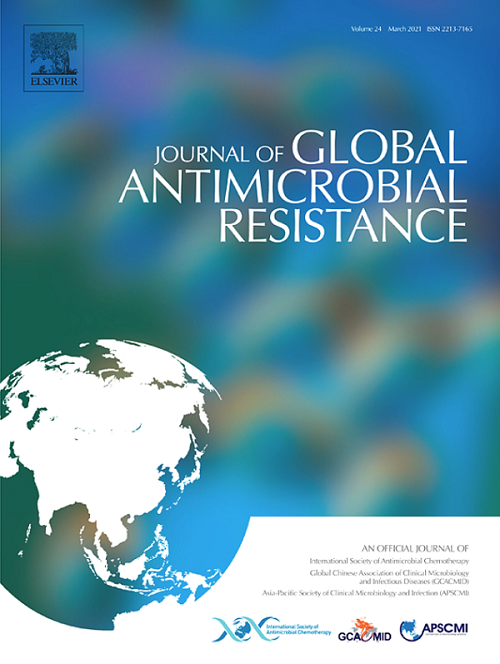Ceftazidime-Avibactam versus Polymyxin-Based Therapies: A Study on 30-Day Mortality in Carbapenem-Resistant Enterobacterales Bloodstream Infections in an OXA-48 Endemic Region
IF 3.7
3区 医学
Q2 INFECTIOUS DISEASES
引用次数: 0
Abstract
BACKGROUND-AIM
Ceftadizime-avibactam(CAZ-AVI) is recommended as the primary treatment for bloodstream infections (BSI) caused by OXA-48 β-Lactamase producing Carbapenem-resistant Enterobacterales (CRE), while polymyxin-based-combination-therapies(PBT) are considered a last resort if in-vitro susceptible and CAZ-AVI is unavailable.
Research comparing effectivenes of CAZ-AVI and PBT in CRE-BSI is limited, mostly focusing on KPC-producing isolates. In Turkey, OXA-48 is endemic and OXA-48-Like is common.Globally, there is limited studies on this topic. Therefore, our study aimed to compare the impact of these treatments on 30-day mortality in patients with CRE-BSI in this region.
METHODS
Retrospective data from January 2019 to May 2023 were collected from four tertiary healthcare centers in Istanbul. Demographic, clinical, and outcome data of ICU patients treated with CAZ-AVI monotherapy or PBT for CRE-BSI were analyzed. The effect on 30-day survival was evaluated using Cox regression analysis post propensity score matching (PSM) with R4.3.3 and Rstudio.
RESULTS
Out of 151 patients, 44.4% received CAZ-AVI and 55.6% received PBT. 30-day all-cause mortality rates were 20% with CAZ-AVI and 36.9% with PBT. Cox regression analysis post PSM indicated CAZ-AVI monotherapy significantly reduced the 30-day mortality risk compared to PBT(HR: 0.16,95%CI 0.07-0.37,p < 0.001), while age increased the risk(HR:1.02 per year, 95% CI 1.0-1.04, p: 0.01).
CONCLUSION
In regions endemic with OXA-48, CAZ-AVI demonstrated lower mortality rates in CRE-BSI compared to PBT. The results were attributed to the pharmacokinetic and pharmacodynamic disadvantages of polymyxins compared to CAZ-AVI and the impact of age-related physical conditions. Therefore,CAZ-AVI should be the preferred treatment for CRE-BSI in such endemic areas.
求助全文
约1分钟内获得全文
求助全文
来源期刊

Journal of global antimicrobial resistance
INFECTIOUS DISEASES-PHARMACOLOGY & PHARMACY
CiteScore
8.70
自引率
2.20%
发文量
285
审稿时长
34 weeks
期刊介绍:
The Journal of Global Antimicrobial Resistance (JGAR) is a quarterly online journal run by an international Editorial Board that focuses on the global spread of antibiotic-resistant microbes.
JGAR is a dedicated journal for all professionals working in research, health care, the environment and animal infection control, aiming to track the resistance threat worldwide and provides a single voice devoted to antimicrobial resistance (AMR).
Featuring peer-reviewed and up to date research articles, reviews, short notes and hot topics JGAR covers the key topics related to antibacterial, antiviral, antifungal and antiparasitic resistance.
 求助内容:
求助内容: 应助结果提醒方式:
应助结果提醒方式:


